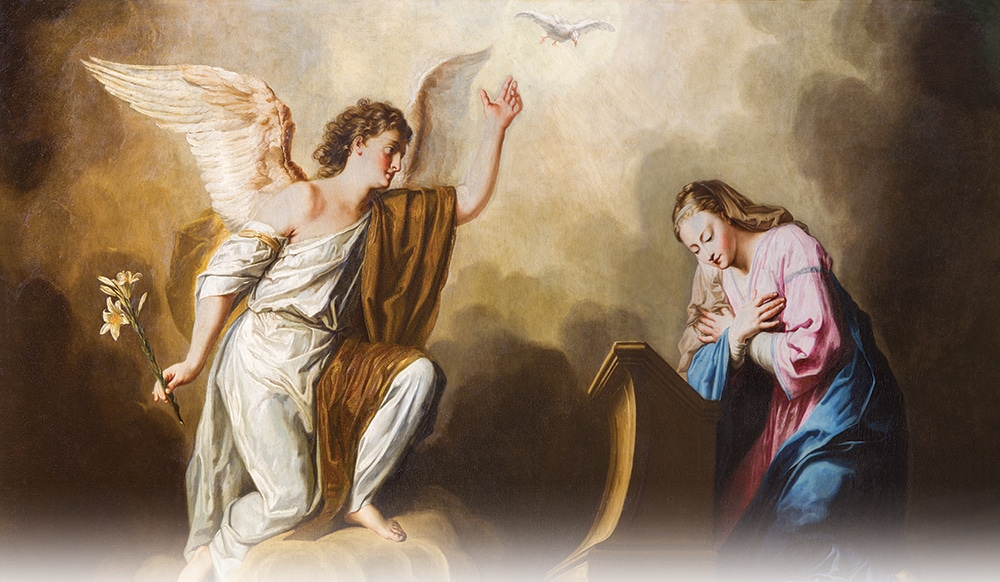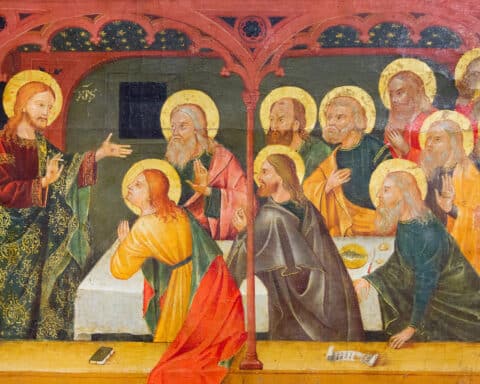It’s said that an authentic Christian is someone about whom others, observing him or her in action, are moved to say, “This person reads the life of Jesus Christ.” And where will you find a more vivid picture of Christ than in the Gospels of Matthew, Mark, Luke and John? Although each is different from the others in some ways or, in the case of John’s Gospel, many ways, at the center of the story they all tell is the same extraordinary figure: Jesus of Nazareth.
But there’s a problem. Many people are exposed to the Gospels only in the snippets read at Mass on Sunday. As a result, instead of an integrated picture of Jesus, they get isolated segments taken out of context, much like unassembled pieces of a jigsaw puzzle.
The aim of this article and others to follow is to tell the story of Jesus’ life straight through from beginning to end and to do so following the Gospels, trusting that a true and rounded picture of Jesus will emerge this way.
Accessibility of the Gospel
The idea isn’t to replace the Gospels, but to make them more accessible. Nothing takes their place as inspired sources of information about Jesus Christ. Together they show a man of complexity and depth — compassionate but stern, someone who knew how to laugh and how to cry, a charismatic leader uninterested in worldly power, a subtle thinker who drew sublime messages from ordinary life. And ultimately, of course, the Son of God.
Each Gospel begins in its own way — John with a prologue containing a compact theological meditation on the Incarnation, Matthew with a genealogy of Jesus, Mark by plunging directly into his public life and speaking of John the Baptist as Christ’s precursor. For accounts of Christ’s birth, infancy and childhood, we turn to Luke and then to Matthew. What Luke says is of special interest because of the tradition that his source was the Virgin Mary herself.
John the Baptist
The story begins with an elderly Jewish priest named Zechariah and an archangel named Gabriel. Zechariah and his wife, Elizabeth, are “righteous in the eyes God,” but they have one great disappointment: After many years of marriage, they are childless. And now Zechariah is old and Elizabeth past childbearing age.
One day, Zechariah entered the sanctum of the great Temple in Jerusalem to take his turn burning incense. He was alone at the altar of sacrifice when suddenly an angel appeared. Zechariah was terrified, but, telling him not to be afraid, the angel delivered this message: “Your prayer is heard. Your wife Elizabeth will bear you a son, and you shall call his name John.” Not only that — this son was to have a great role in God’s plan: “To prepare a people fit for the Lord.”
Like many old men, Zechariah undoubtedly had experienced his share of unkept promises, so he responded with a question: “How shall I know this?” In other words, show me a sign: Tell me, for example, that such-and-such altogether unpredictable event will happen tomorrow, and if it does happen, then I’ll believe what you say.
The angel is not amused. “I am Gabriel, who stand before God,” he announces sternly, “and I was sent to speak to you, and announce to you this good news.” Then he gives Zechariah a sign: “You will be speechless and unable to talk until the day that these things come to pass.”
When, a short time later, Zechariah stumbles out of the place of sacrifice, speechless and probably a bit wild-eyed, everyone realizes that he has seen a vision. And not long after, just as the angel foretold, Elizabeth conceives.
Annunciation of Jesus
Next the evangelist tells of another annunciation. In the sixth month of Elizabeth’s pregnancy, God sends Gabriel to a town called Nazareth, an out-of-the-way place in the region of Galilee, about 75 miles north of Jerusalem. He brings with him a message for a young woman named Mary.

“Hail, full of grace! The Lord is with you,” he greets her, using words familiar to us as the opening of the Hail Mary. Mary is “greatly troubled” at this salutation, not knowing what it means, but Gabriel reassures her: “Do not be afraid, Mary, for you have found favor with God. And behold you will conceive in your womb and bear a son, and you shall call his name Jesus.”
Mary replies, “How can this be, since I have no relations with a man?” Inasmuch as she is betrothed to Joseph, this seems to imply that she has already made a permanent commitment to remain a virgin.
The angel answers, “The Holy Spirit will come upon you, and the power of the Most High will overshadow you. Therefore the child to be born will be called holy, the Son of God.” He adds that Elizabeth — who we now learn is Mary’s “relative” — has conceived a son, “for nothing will be impossible for God.”
Noting that Luke’s Gospel identifies Mary as a descendant of King David (Lk 1:27), theologian Romano Guardini calls her reply “queenly” — for, upon being asked by God to do something “far beyond human comprehension,” she answered “simply, utterly unconscious of the greatness of her act,” speaking words that have been repeated countless times since then: “Behold, I am the handmaid of the Lord. May it be done to me according to your word.” And, his mission accomplished, Gabriel leaves her.
Punishment or reward
At this point someone reading the Gospel may wonder if it isn’t unfair for Zechariah to be punished for asking a question while Mary is rewarded with a clear answer and a stupendous promise. But their questions were fundamentally different. Zechariah’s expressed doubt. Mary’s was a straightforward request to know how God’s will would be accomplished, followed by her full assent.
After her encounter with the angel, Mary went “in haste” to Zechariah and Elizabeth’s home in the hill country near Jerusalem to help her pregnant relative. “Most blessed are you among women,” Elizabeth greets her. Mary responds with the prayer we know as the Magnificat: “My soul proclaims the greatness of the Lord; and my spirit rejoices in God my Savior.”
The rest of the Luke’s first chapter concerns the birth of John the Baptist, including Zechariah’s recovery of speech and his stirring canticle celebrating the deliverance of Israel. And where was St. Joseph in all this? Matthew’s Gospel supplies the answer. Understandably troubled by the news of Mary’s pregnancy, but “since he was a righteous man, yet unwilling to expose her to shame,” Joseph decided to put her away quietly, as Jewish law permitted him to do before their marriage was consummated. But an angel — Gabriel again? — tells him in a dream to proceed with the marriage: “She will bear you a son, and you are to name him Jesus, because he will save his people from their sins.” And so these two good people, marked out by God for great roles in his redemptive plan, became man and wife, and the stage was set for the birth of Jesus Christ.
Russell Shaw is a contributing editor for Our Sunday Visitor.





